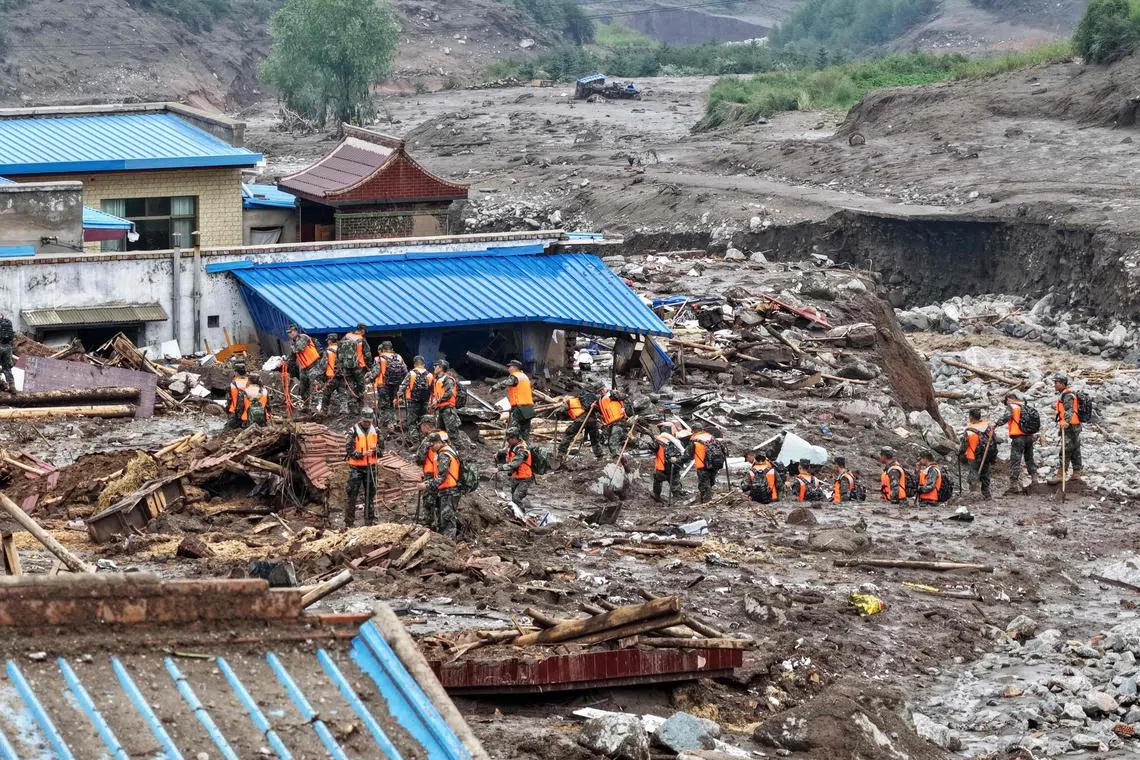Death toll from north-west China floods rises to 13
Sign up now: Get ST's newsletters delivered to your inbox

Rescue workers searching for survivors after a flash flood in Yuzhong county, in China’s north-west Gansu province, on Aug 8.
PHOTO: AFP
Follow topic:
BEIJING – The death toll from flash floods and mudslides in north-west China has risen to 13, the state media said on Aug 9, after the bodies of three people were found.
Torrents of mud and water began hitting mountainous areas of Gansu province on Aug 7, with the death toll listed as 10 on Aug 8
Natural disasters are common across China, particularly in the summer, when some regions experience heavy rain while others bake in searing heat.
Chinese President Xi Jinping called for the “utmost effort” in rescuing missing people, state broadcaster CCTV reported on Aug 8.
The death toll stood at 13, with the number of missing now listed as 30, state news agency Xinhua said on Aug 9.
Hundreds of people had been rescued and thousands more evacuated, Xinhua added.
It quoted a rescue official describing the situation as “complex” due to the mud and rough roads, with telephone lines and electricity also cut.
The state media on Aug 8 put the number of people trapped in the mountainous Xinglong area at 4,000, with heavy rain pushing garbage into roads.
Beijing’s top economic planner has allocated 100 million yuan (S$17.9 million) towards disaster relief in Gansu.
The authorities also announced a yellow alert on Aug 9 for torrential rains and activated a flood response plan in the provinces of Jiangsu, Anhui, Hubei and Chongqing, CCTV said.
China’s south has also experienced torrential downpours this week, with tens of thousands of people evacuated across Guangdong.
Heavy rain in Beijing in the north also killed 44 people in July
Scientists warn that the intensity and frequency of extreme weather events will increase as the planet continues to heat up because of fossil fuel emissions.
China is the world’s biggest emitter of greenhouse gases but is also a global renewable energy powerhouse. AFP

